9 Best Fruit Trees To Grow In Northern California
Northern California has several growing zones that range from polar to subtropical, which makes it great for growing a wide variety of fruit trees. Much of the State has a moderate climate with warm dry summers and wet winters.
What are the best fruit trees to grow in California?
- Apple
- Avocado
- Citrus
- Lemon
- Orange
- Grapefruit
- Plum
- Persimmon
- Mango
I. Apple
- Apples do particularly well in California, especially Northern California because they require 400 to 1,000 chill hours, on average. The varieties that do well are Fuji, Gala, Dorset Golden, Beverly Hills, and Anna. Most apple varieties need to cross pollinate, so you should plan several different varieties close to each other for the fruit to set.
- Apples in California generally prefer well-drained, sandy loam soils. Depending on the variety, apples ripen in California around September or October, but some varieties, such as the Gala are typically harvested in July.
Health Benefits and Uses
- Helps in the management of irritable bowel syndrome (IBS)
- Beats diarrhea and constipation
- Prevents gallstones from forming
- Keeps the heart healthy
- Lowers the risk of diabetes
- Keeps teeth white and healthy
- Rich in vitamins A, B complex, and C and benefit skin by helping get rid of excess oil and pathogens. Eating apples regularly can help brighten your skin and correct uneven skin tone.
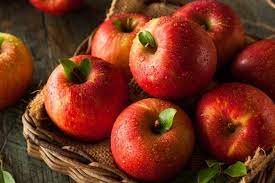
II. Avocado
- Fuerte and Mexicola are two avocado varieties that tolerate the cold better and will grow in Northern California if enough frost protection is provided. If you would like to grow avocado varieties suited to Northern California, try shielding your tree from the cold by planting it between other trees and plants.
- Avocado trees don’t require any chill hours for the fruit to set. It’s generally advisable not to grow an avocado tree from its seed since it can take close to a decade or more to bear any fruit. It’s simply better to buy a tree and plant it in your backyard.
- Avocado trees prefer soil that drains well such as sandy or loose soil. It’s advisable to plant the trees on mounds as opposed to flat surfaces to help with the drainage. If you want to get fruit, it’s best to plant 2 avocado trees. The second tree is needed for pollination.
Health Benefits and Uses
- Prevents cancer
- Promotes better vision
- Helps in regulating blood pressure
- Essential for a healthy pregnancy
- Improves digestion
- Great for heart health
- Aids in weight loss
- Anti-inflammatory properties
- Highly nutritious with a concentrated source of both vitamins and minerals
- Avocados are rich in nutrients often lacking in many people’s diets, which include magnesium, Vitamin C, Vitamin B6, Vitamin E, as well as folate.

III. Citrus
- Citrus trees generally prefer being in the full sunlight and will do best in soil that drains well. You can also plant citrus trees in pots to be kept indoors, because most varieties will actually fruit just as well in a pot.
- A citrus tree has fragrant spring flowers, evergreen leaves, and bountiful yields of delicious fruit that’s rich in vitamins and it can be a highly attractive, high-value addition to the edible landscape of the Northern California gardener.
- Just as is the case with any other fruit tree, there are certain tips and tricks you can learn to achieve optimal success with citrus. Still, choosing varieties ideally suited to your specific microclimate and being prepared for possible challenges can go a long way towards achieving the flavor-filled results and abundant harvests that you desire.
Health Benefits and Uses
- Citrus fruits may help in lowering high blood pressure, which is a risk factor for heart disease
- Citrus fruits have soluble fiber and flavonoids that may help raise healthy HDL cholesterol
- Citrus fruits also contain numerous compounds that promote heart health.
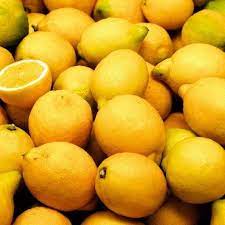
IV. Lemon
- The Pink-Fleshed Eureka lemon also known as Variegated pink lemon tree is a unique lemon cultivar that’s growing in popularity. It is technically an evergreen flowering plant that produces delicious, unique, and prized fruits.
- It has lovely fragrant white flowers that produce abundant, gorgeously-striped lemons that boast of juicy pink interiors. The standard height of a mature tree is between 15 and 18 feet while the semi-dwarf variety (suitable for containers) attains a height of between 8 and 10 feet. Harvesting is done in late fall through spring.
Health Benefits and Uses
- Improves digestive health
- Lowers cancer risk
- Protects against anemia
- Promotes weight loss
- Prevents kidney stones
- Support heart health and are an excellent source of vitamin C.

V. Orange
- Indio Mandarinquat is a winter-producing, sweet-ta cross between a mandarin orange and a kumquat, which has a sugary, deep-orange skin surrounding a tangy, tasty, juicy interior. You don’t even need to peel since this bell-shaped fruit is delicious whole.
- It can also be thinly sliced into salads, sliced, or even turned into an incredibly rich and complex marmalade. The tree’s height ranges from 8- to 12-feet and is delightfully ornamental with its fragrant later summer and fall blooms as well as deep green leaves.
Health Benefits and Uses
- Boosts the immune system, which is your body’s defense against germs
- Makes it easier for the body to absorb iron to fight anemia
- It helps the body make collagen, a protein that not only heals wounds but also gives you smoother skin.
- Protects the cells from damage.
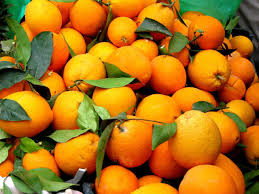
VI. Grapefruit
- The Rio Red Grapefruit was developed in Texas back in 1984 and is an improvement to earlier red-fleshed varieties and is even sweeter in taste. In fact, it is significantly sweeter than most of the white-fleshed grapefruits.
- The Rio Red Grapefruit can grow planted or in containers and produces about 25 pounds of fruit annually. The fruit is not only bursting with flavor but also loaded with minerals and vitamins.
Health Benefits and Uses
- Grapefruits, just like oranges and other citrus fruits contain high levels of vitamin C.
- In fact, a single whole medium grapefruit provides 100% of your daily requirement for vitamin C, a powerful antioxidant that’s great for the immune system and can help fight off bacteria and viruses that cause disease.

VII. Plum
- Plum is a single type of fruit with numerous options. You can have yellow, red, green, purple, tart, mottled, sweet, and black varieties.
- Plum trees can be planted close together and there are excellent opportunities for cross-pollination.
- Apricots can also be grown in close proximity to plums.
Health Benefits and Uses
- Promotes bone health
- Helps regulate blood sugar
- Rich in antioxidants
- Helps prevent stroke and high blood pressure
- It provides constipation relief
- It helps fight heart disease since it contains nutrients and phytochemicals that lower the inflammation responsible for triggering heart disease.
- It helps prevent anxiety
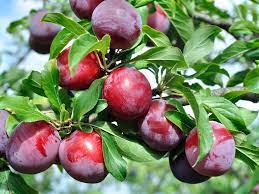
VIII. Persimmon
- Persimmon fruit trees typically ripen during Fall once the leaves have fallen.
- They grow particularly well in full sun and part shade.
- When eaten dried, they are like another date-like fruit, but you can also eat them fresh.
Health Benefits and Uses
- Persimmons are sweet, versatile fruits full of minerals, vitamins, and fiber, which reduces inflammation and promotes heart health.
- Persimmons also support healthy vision and keep your digestive system healthy. Furthermore, they are not only tasty but also pair well with numerous other foods.
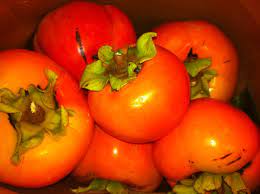
IX. Mango
- Fruit mangos can be successfully grown in the San Francisco Bay Area and throughout low-elevation Northern California unprotected in the best microclimates as well as with minor protection in winter within the colder zones.
- The mango is a particularly beloved fruit. In fact, many people consider the mango as one of the most sensual and seductive fruits with their sunset vibrant colors, copious sweet juices, and smooth sensuous texture.
Health Benefits and Uses
- May support eye health
- May improve digestive health
- Supports heart health
- Contains nutrients that boost your immune
- High in healthy plant compounds
- May help in preventing diabetes
- Low in Calories
- Packed with nutrients

Final Thoughts
- You have a choice of a variety of fruit trees in Northern California that it can be rather daunting to choose the best one, but you shouldn’t worry because we are here to help.
- Our team of experts is focused on helping you gain some insight into the best fruit trees that would be ideal for your Northern California property so that you can make an informed decision.
- For more assistance, please call us today!
- call Bloom Tree Trimming Services Stockton,CA (209) 285-2326
